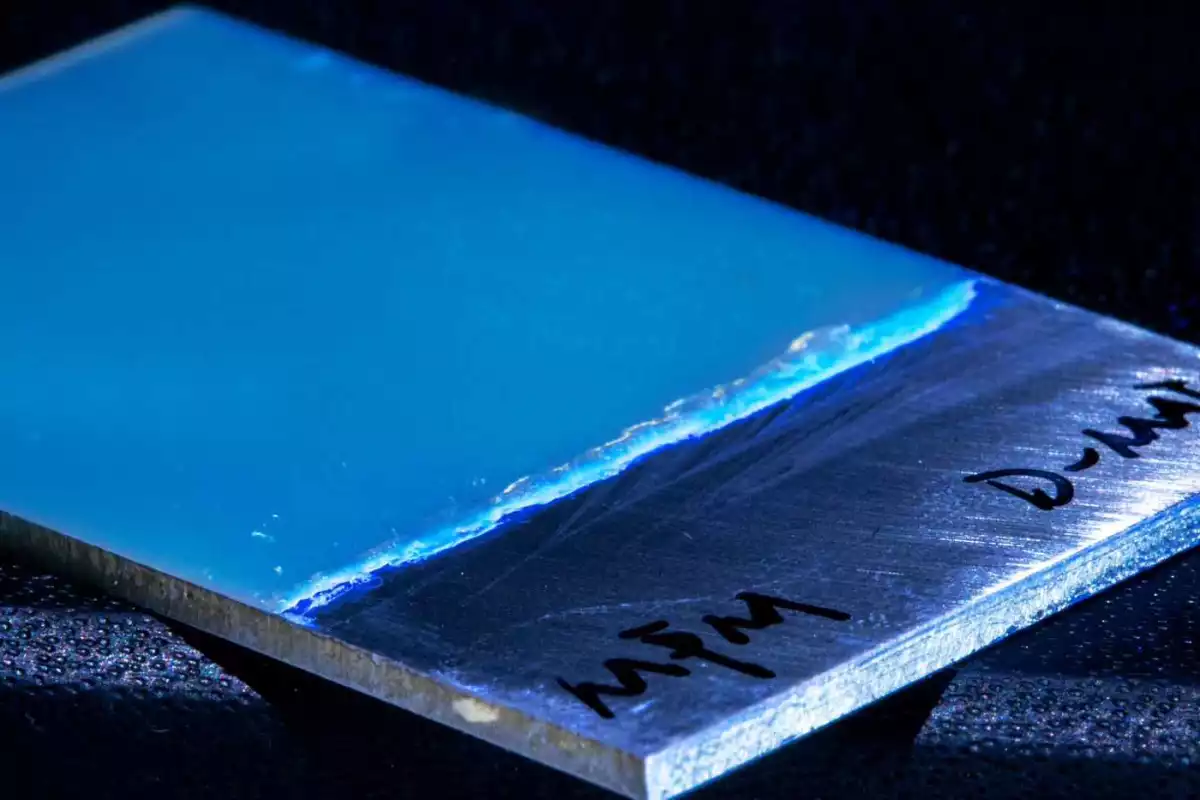Engineers at ETH Zurich have developed a versatile new material that should help in the ongoing battle against corrosion for buildings and vehicles. The polymer coating not only protects against corrosion, but highlights cracks as they form, automatically repairs damage to itself, and can be recycled at the end of its life.
Corrosion will eventually affect pretty much everything humans build, from skyscrapers and bridges to planes, trains and automobiles. Developing new corrosion-resistant materials and coatings is a constant need, and now scientists have developed one with plenty of intriguing features.
The new material is called Poly(phenylene methylene), or PPM for short, and can be sprayed onto a surface where it hardens into a solid polymer coating. To test how well it performed as a barrier to corrosion, the team conducted an accelerated aging experiment where samples of aluminum alloy were exposed to a salty solution, either with or without a PPM coating. And sure enough, metals coated with 30- and 50-micrometer-thick layers of PPM showed no significant corrosion after many cycles of accelerated aging.
PPM also demonstrated a self-healing ability. When the team deliberately scratched the coating, then exposed it to the solution, it was found to quickly patch up the break on its own. This works because the solution reacts with the aluminum underneath, which causes the area to heat up and melt the polymer just enough to flow into the gap. Once filled, the contact between the solution and the metal is broken so it cools down, and the coating hardens once again.
The polymer gives advanced warning of this kind of damage too, in case human intervention is required. PPM fluoresces under UV light, but not if it’s damaged, allowing for a clear way to check for cracks that might otherwise be hard to spot.
Even at the end of its life, this overachieving material doesn’t stop – it can be recycled and applied to a new surface. By contrast, similar polymers can only be thrown into landfill or incinerated. In tests, the researchers removed and recycled it with only 5% loss of the material, and no drop in its performance even after five cycles of reuse.
The researchers are currently applying for a patent for the material, while further work will investigate ways to improve the formula.
The research was published in the journal Polymers.
Source: ETH Zurich




